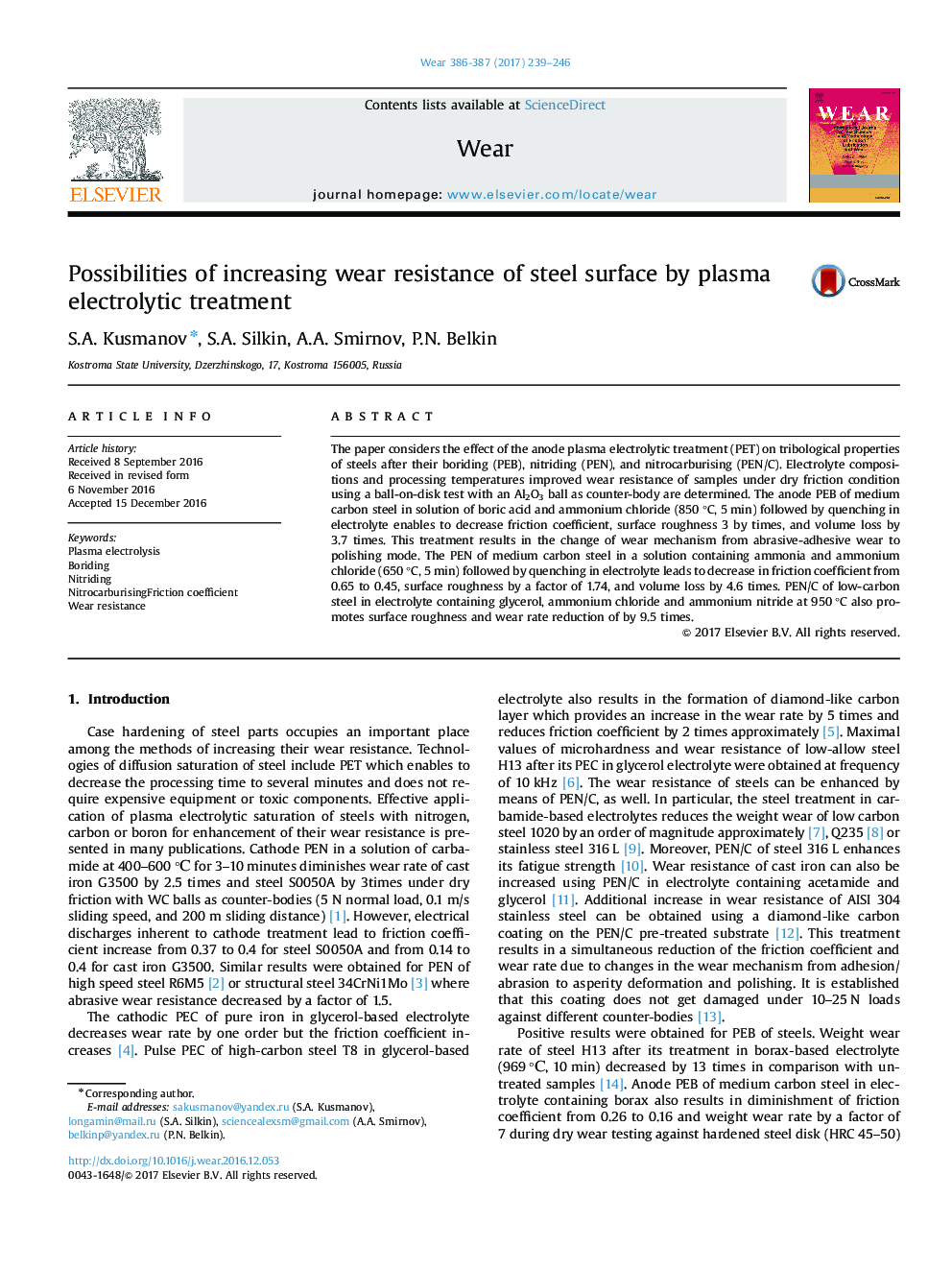| Article ID | Journal | Published Year | Pages | File Type |
|---|---|---|---|---|
| 4986454 | Wear | 2017 | 8 Pages |
Abstract
The paper considers the effect of the anode plasma electrolytic treatment (PET) on tribological properties of steels after their boriding (PEB), nitriding (PEN), and nitrocarburising (PEN/C). Electrolyte compositions and processing temperatures improved wear resistance of samples under dry friction condition using a ball-on-disk test with an Al2O3 ball as counter-body are determined. The anode PEB of medium carbon steel in solution of boric acid and ammonium chloride (850 °C, 5 min) followed by quenching in electrolyte enables to decrease friction coefficient, surface roughness 3 by times, and volume loss by 3.7 times. This treatment results in the change of wear mechanism from abrasive-adhesive wear to polishing mode. The PEN of medium carbon steel in a solution containing ammonia and ammonium chloride (650 °C, 5 min) followed by quenching in electrolyte leads to decrease in friction coefficient from 0.65 to 0.45, surface roughness by a factor of 1.74, and volume loss by 4.6 times. PEN/C of low-carbon steel in electrolyte containing glycerol, ammonium chloride and ammonium nitride at 950 °C also promotes surface roughness and wear rate reduction of by 9.5 times.
Related Topics
Physical Sciences and Engineering
Chemical Engineering
Colloid and Surface Chemistry
Authors
S.A. Kusmanov, S.A. Silkin, A.A. Smirnov, P.N. Belkin,
